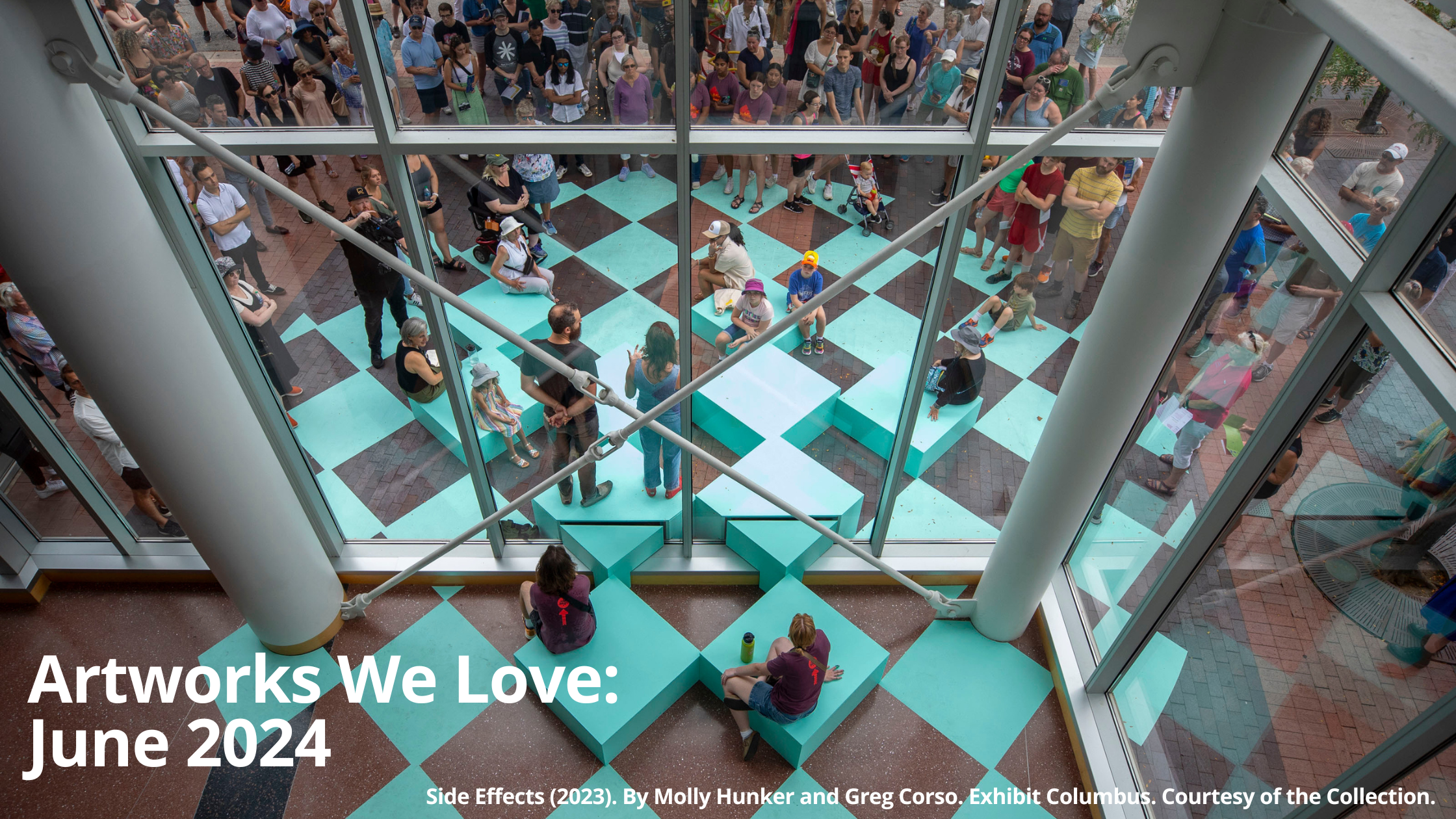
Public art signage is intriguing in its many surprising and often subtle variations. The modern need for signs to aid navigation may be diminished in the age of technology, but the purpose and function of signage remains layered with meaning. Signs can represent identity, promote goods and ideas, guide people to a destination, provide information, and inform decision-making.
The Public Art Archive (PAA) is home to an amazing variety of public artworks that take the form of signage, showcasing how artists have creatively co-opted common objects to produce a multitude of effects. Read on to learn more about public art as signage and the different roles these artworks play in public spaces.
Influencing Behavior

Afromation Avenue (West Philadelphia) (2022). By Marian Bailey, Kristin Kelly, Brittni Jennings and Lindsay Bedford. Mural Arts Philadelphia. Image courtesy: Courtesy: Afromation Avenue © 2022 City of Philadelphia Mural Arts Program / Marian Bailey, Lindsay Bedford, Brittni Jennings, Kristin Kelly, 52nd Street Corridor. Photo by Steve Weinik.
Traditional signage influences human behavior, such as buying a specific product or moving in a particular direction. Afromation Avenue (West Philadelphia) by artists Marian Bailey, Kristin Kelly, Brittni Jennings, and Lindsay Bedford is an artwork that harnesses the persuasive power of signage to cultivate feelings of encouragement, value, and respect in predominantly Black/African American communities throughout Philadelphia. This work reveals a layered interpretation of “way-finding” that encompasses exploring emotions and promoting belonging within a place.
Promotion of Ideas
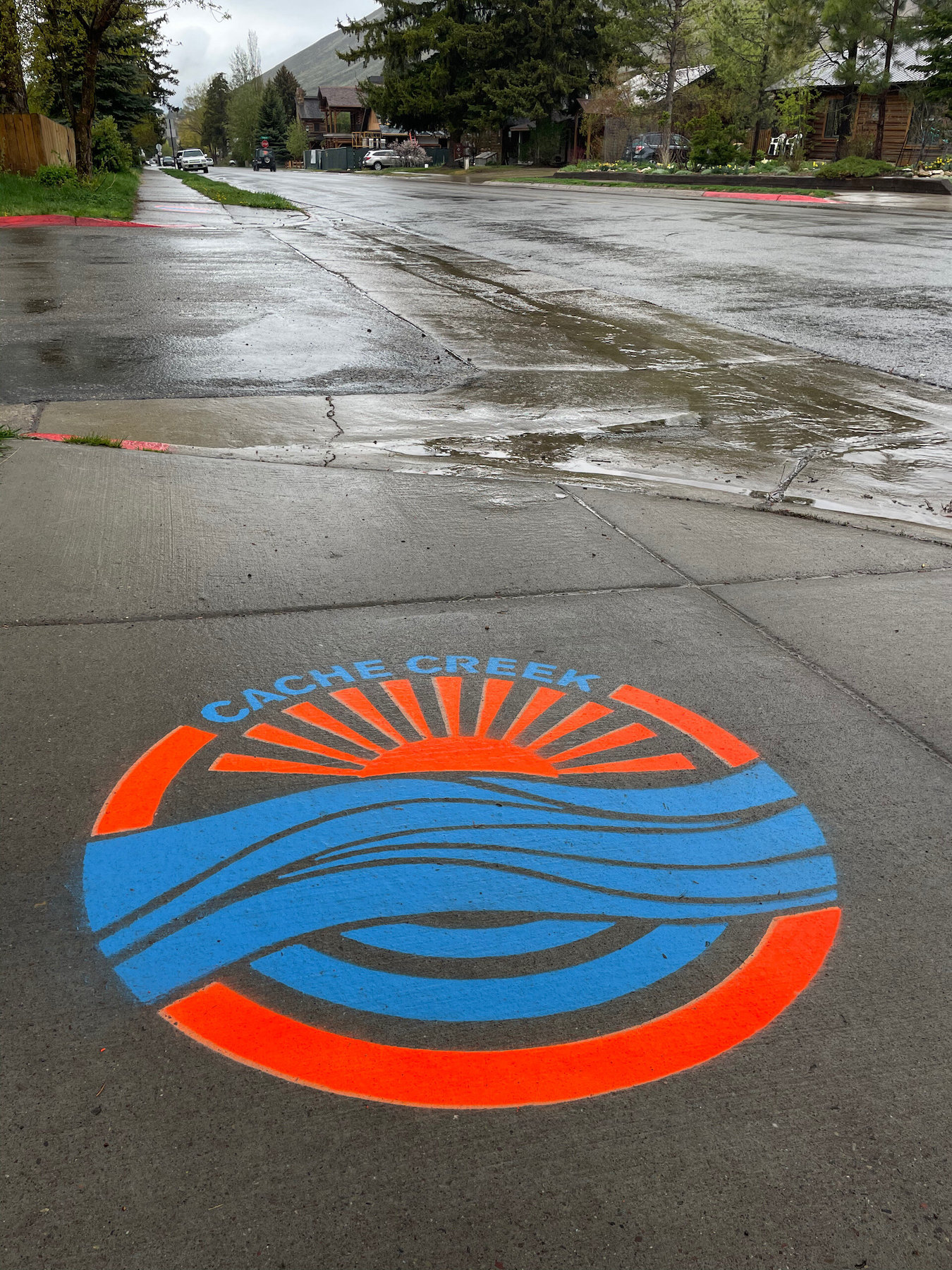
Jackson Hole Public Art and the Teton Conservation District’s Virtual Daylighting of the Cache Creek Tube Project (2021). By Matt Grimes and Heliocentric Designs. Jackson Hole Public Art. Photo courtesy of the the collection.
Jackson Hole Public Art and the Teton Conservation District’s Virtual Daylighting of the Cache Creek Tube Project, created by artist Matt Grimes and Heliocentric Designs, brings community awareness to Cache Creek in Jackson, Wyoming. “Daylighting” refers to the relatively new approach to reclaim and expose urban streams or drainages through natural, architectural, or cultural restoration. The purpose of virtually daylighting the Cache Creek Tube is to increase public education about stormwater and flood management in Jackson and inform citizens about what they can do to improve local water quality. Across the country, case studies show that daylighting previously buried streams increases community livability, provides economic benefits, and improves water quality and natural habitat. With this artwork, the city of Jackson hopes to inspire ideas about how Cache Creek’s ecological and community value can be restored.
Shaping Experience
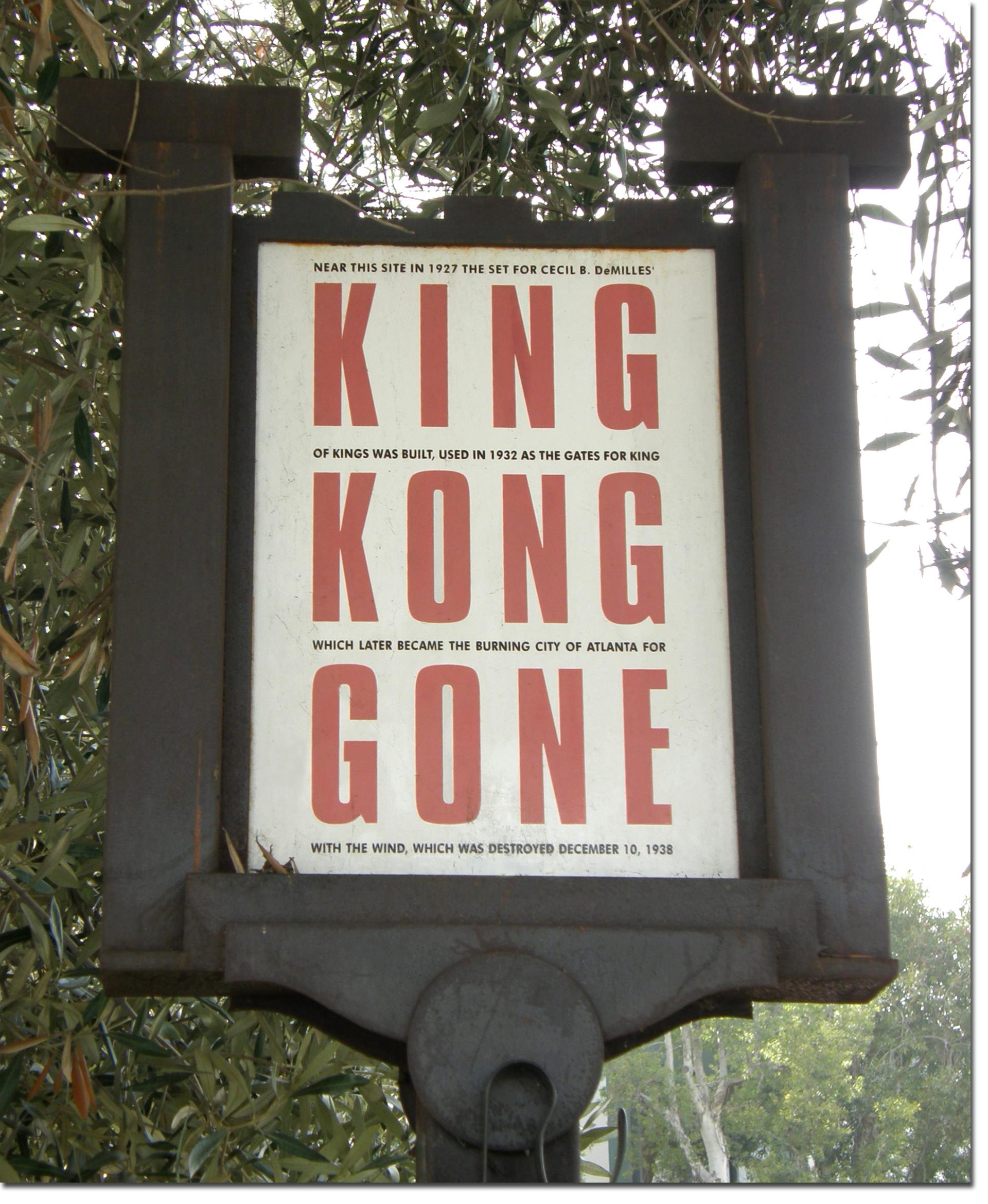
King Kong Gone. By Jim Heimann. Culver City Public Art. Photo courtesy of the collection.
Jim Heimann’s King Kong Gone in Culver City, CA, is an example of a classic signpost functioning to provide information and shape an experience. The sign informs passersby, “Near this site in 1927, the set for Cecil B. Demilles’ KING of Kings was built, used in 1932 as the gates for King KONG, which later became the burning of the City of Atlanta for GONE with The Wind, which was destroyed December 10, 1938.” The deliberately curious design of the sign first catches the eye, then requires that readers physically pause to read the sign and learn about the rich context of the place they’re occupying. This signage takes a step beyond providing information about a significant site: its design shapes the viewer’s experience of the site, insisting that readers stop to understand and appreciate its history.
Landmarks
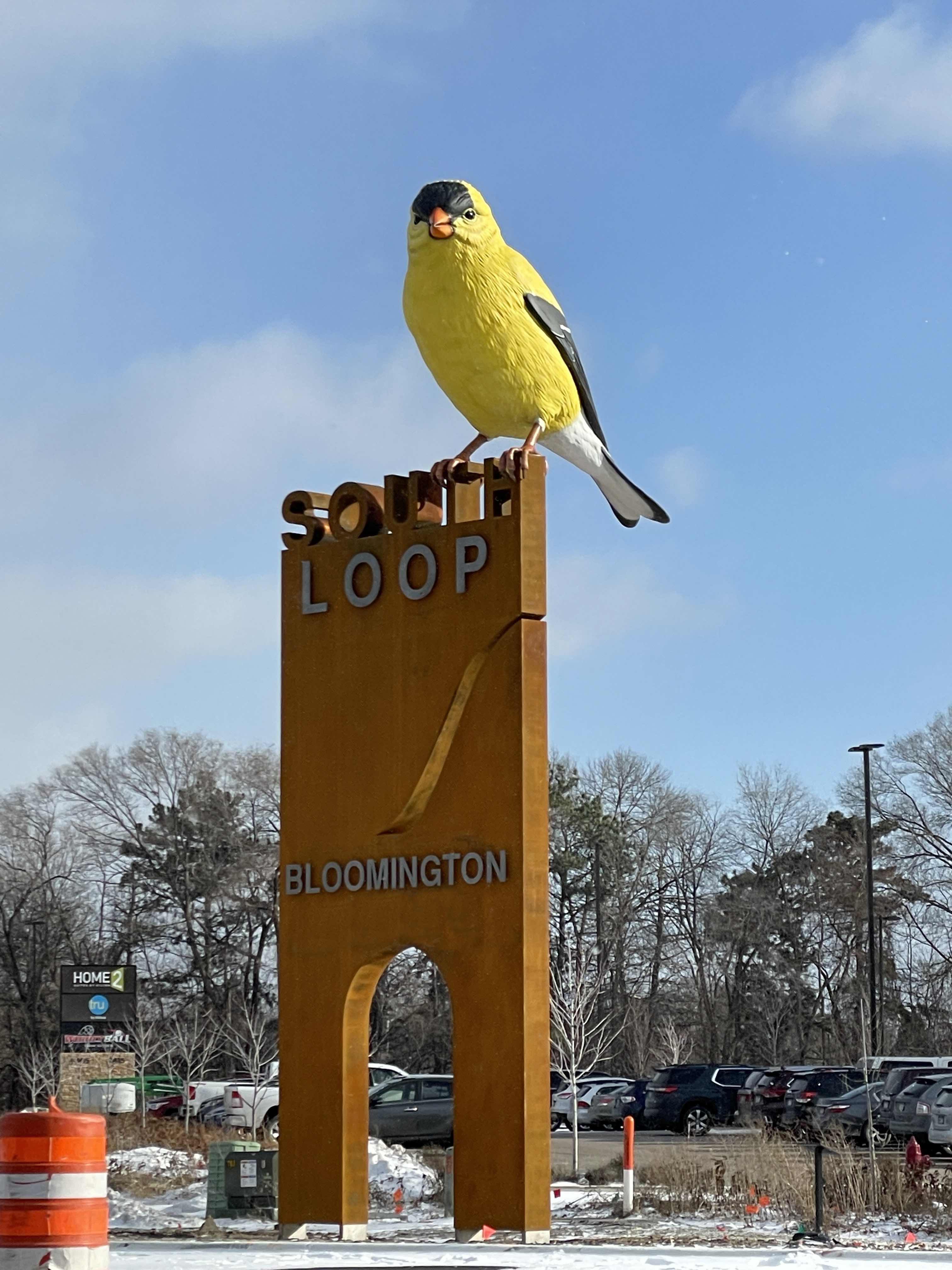
The Goldfinch (2021). By Donald Lipski. Bloomington South Loop Public Art. Photo courtesy Public Art Services.
In some cases, public art signage can assume a monumental scale and become a landmark in public space. In these instances, like Donald Lipski’s The Goldfinch, which features a larger-than-life songbird, the American Goldfinch, perched atop a sign welcoming all to Bloomington, MN’s South Loop District. The songbird nods to the neighboring Minnesota Valley National Wildlife Refuge, a well-known site for bird watchers who travel to the area to watch migrating birds. This signature work has undoubtedly become a landmark for orienting and way-finding in the neighborhood. In this way, the artwork is valuable beyond its information or aesthetic appeal: it has the power to deepen the understanding or memory of a place.
Identity-Creation
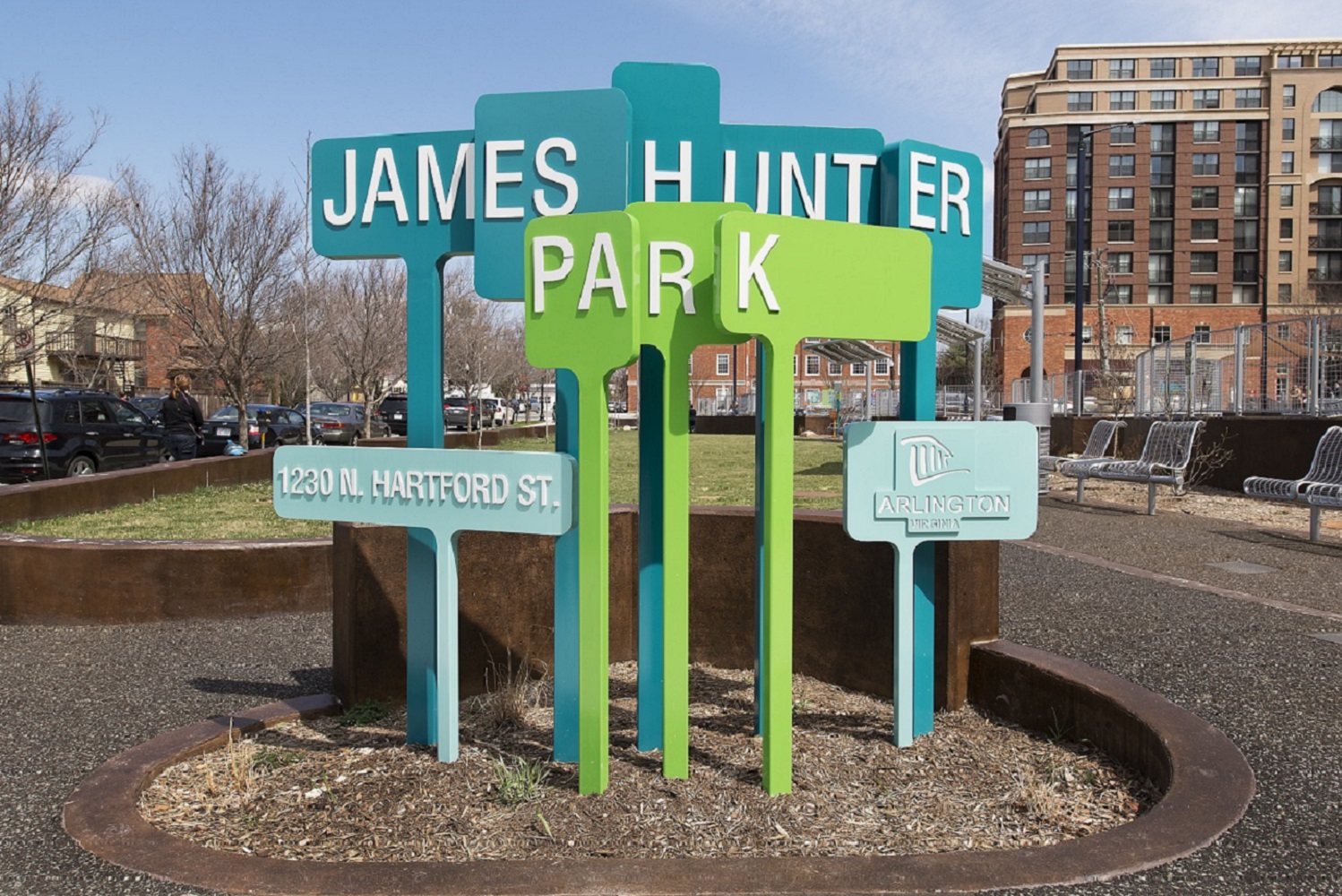
James Hunter Park Wayfinding (2013). By ThoughtBarn. Arlington County Public Art Collection. Photo courtesy of the collection.
Public art as signage can also contribute significantly to identity creation for a specific site or city. ThoughtBarn’s James Hunter Park Wayfinding in Arlington, VA, is a clever example of how signage can communicate the identity of a space. The wayfinding system for the park includes whimsical signs with information about the park’s unique environment that encourage learning experiences, engendering a welcoming and positive community space.

